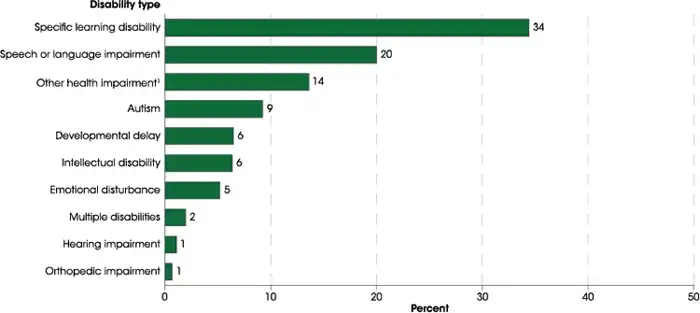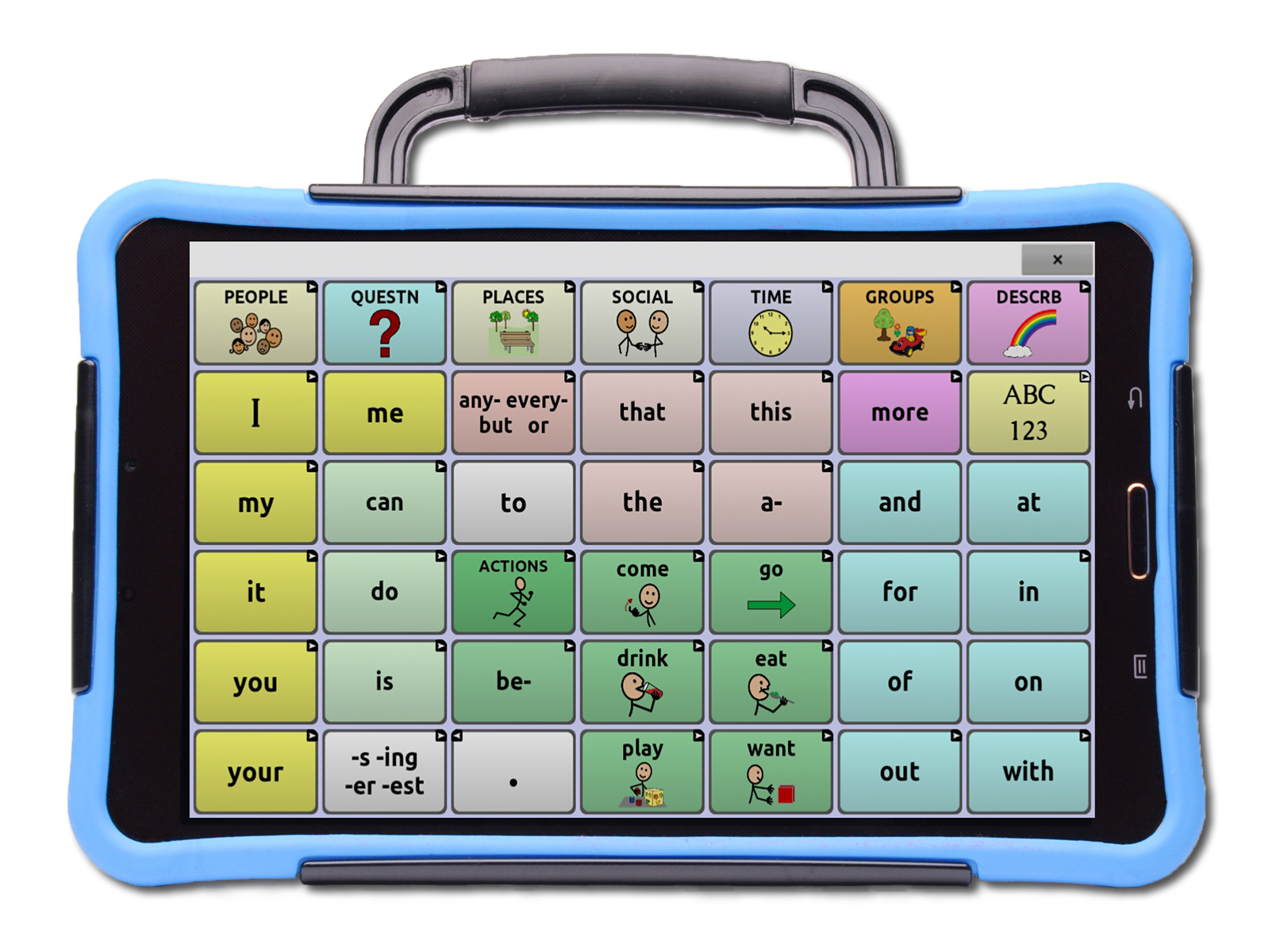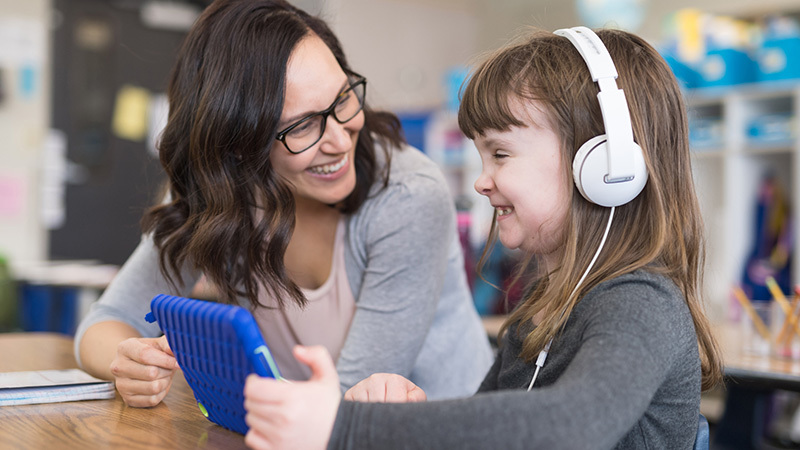by Hailey Park | January 24, 2023
Over the past decade, technology has increasingly become a standard tool being used in today’s classrooms. The same students who carried textbooks to their classes are now carrying laptops and tablets. Technology creates efficiency and convenience when it comes to learning. However, does this mean it’s the same for special education students?
Defining ‘Special Education’
Special education is the specifically designed instruction to meet the unique needs of a child with a disability. This can include instruction conducted in the classroom, in a home, in hospitals, and other environments.
Thanks to the Individuals with Disabilities Education Act (IDEA), special education services are provided to a student at no cost to the family. But because IDEA only mandates students enrolled in a public school to receive such services based on their Individualized Education Plan (IEP), special education services provided within private settings, such as at home, are typically paid for independently or covered by insurance.
One of the objectives of creating an IEP is to define the specially-designed instruction to address a student’s unique needs that results from their disability. This document can be long and contain a lot of legalese, but the annual goals, progress tracking, description of services, duration of services, any testing adaptations, and other sections within it make it a critical component of the student’s learning experience.
Disability Categories

A chart of the most common disability types, with Specific Learning Disability, Speech or Language Impairment, and Autism included as 3 of the top 4 types. Source: National Center for Education Statistics
Some disabilities can be due to genetic and/or neurobiological factors that ultimately alter brain function, and affect one or more cognitive processes related to the learning process. Once a child is evaluated for one or multiple disabilities, they qualify for special education services.
These processing challenges may interfere with an individual’s ability to learn basic skills, such as reading, writing, and math. There may also be deficits with higher level skills, such as organization, time planning, and attention.
Technology in Special Education
The central purpose of technology use in special education is to create a comfortable environment for students to learn in a way that accommodates their individual learning styles and limitations. Teachers may not always be equipped with the resources and knowledge necessary to to assist all their students in the most effective way possible, so technology can be used to better connect with a student and teach lessons in an engaging way.
Not only does technology accommodate individual students, but also the adaptive lessons can allow for greater inclusion in classrooms as well. This is beneficial for everyone in the classroom because special education students are able to socialize with their peers in the same environment and be exposed to the material and learning styles of their neurotypical classmates. Students without an IEP are also able to better understand various disabilities, creating an inclusive mindset without any social discrimination.
Technology opens the door for special education students to potentially be able to experience the following through the implementation of technology in classrooms:
- Greater independence
- Decreased anxiety
- Improved academic performance
- Build connections with their classmates
Additionally, technology can assist students with mobility impairments as well as students with ADHD, autism, and Down syndrome.
Students with physical disabilities may have a hard time being able to participate in many hands-on classroom activities; with interactive technology tools, such as touchscreens and gesture-based recognition, they can get the same immersive experience their classmates do.
For students with attention deficits, they are able to utilize interactive technology tools provided for these students may keep them more focused and engaged thanks to various audio and visual cues provided in their personalized learning experience. In addition, specialized platforms such as FrenalyticsEDU provide diverse and entertaining learning tools that can create enthusiasm to learn and continue their progress.
What types of technology tools are utilized in special education?
Technology for special education students comes in many different forms to meet the diverse set of educational needs that they have. Here are some examples of the types of technology available to special education students:

This screen is what users would typically see while using the NOVA Chat platform. Individuals are able to click different rectangles presented on the screen to generate the word/phrase aloud. Credit: Saltillo
1. Text-to-Speech Technology
Students who have trouble reading text or communicating can utilize text-to-speech to hear words on a screen read aloud. Those with nonverbal communication and speech/ language disorders can benefit from this technology.
The FrenalyticsEDU platform also offers text-to-speech features for students. They have the ability to click an icon on their learning screen, which will then read questions and answer choices aloud for students.
As another example, NOVA Chat is a speech generation device, shown on the right, that reads text aloud and also converts speech into text on the screen.
2. Voice-Recognition Software
Voice recognition software is a great alternative to a keyboard for those who may not be physically capable of writing with a pen or typing on a keyboard. This technology can help students with motor and physical impairments. Almost every smartphone, tablet, and computer has voice-recognition tools installed; Siri and Alexa are popular examples of voice-recognition software.
3. Virtual Reality
Virtual reality is a computer-generated simulation of a 3D image or environment that can be interacted with in a seemingly real or physical way by a person. Virtual reality environments are able to help a wide scope of special education students. For example, virtual reality can help people with autism safely be exposed to crowds, such as hallways, that may normally cause stress and anxiety. For students with sensory impairments, a virtual learning environment can strengthen their functional and cognitive skills because they are able to manipulate visual and auditory inputs and outputs.
Some virtual reality programs have been made to assist individuals with disabilities to experience virtual reality simulation that can reinforce job skills training so that they are able to maintain employment.
How can educators use Frenalytics’ technology to help special education students with IEPs?

A student and teacher happily using technology in the classroom together. Credit: Advancement Courses
Along with this benefit, technology enables teachers, parents, and educators to have access to quantifiable and tangible data regarding their students’ progress. FrenalyticsEDU is a platform that can provide students with personalized and interactive learning programs, while also providing data analytics to their learning sessions. FrenalyticsEDU conducts data analytics and tracks specific details of a student’s learning session. Having access to tangible data gives educators that personal connection to see the strengths and weaknesses of a student. The data gives insight on not only what a student is struggling in but also what they are excelling in.
As the world continues evolving and advancing within digital developments, technology in special education will become more prevalent. Newer and more efficient technology will be introduced into classrooms, and special education students will be able to have more accurate IEPs (individualized learning programs). Best of all, progress data and growth provided by technology gives both students and teachers motivation and confidence in what they are doing and only provides room for more growth in a student’s progress.
Want to see how FrenalyticsEDU helps students with special needs live more independent lives?
Click here to learn more, or give us a call at (516) 399-7170.
Sign up for FrenalyticsEDU Free!
Hailey Park is a Freshman at New York University studying Hospitality, Travel, and Tourism Management. Through Frenalytics, she has been able to explore new opportunities in the HealthTech field and better understand the power of personalized learning sessions. In her free time Hailey loves to bake, try new foods, and explore the city with friends.
Contact Hailey: hailey@frenalytics.com

